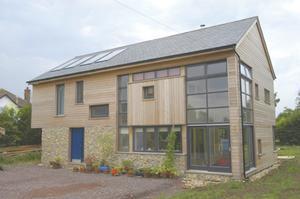Industry bodies have decreed the draft Code for Sustainable Homes “worse than nothing”. Andy Pearson looks at the reasons behind the controversy
Last month, the Government published a consultation document on the Code for Sustainable Homes. It is proving to be something of a controversial document.
At the document’s launch, Housing and Planning Minister Yvette Cooper claimed the document “shows that we [government] can improve environmental protection and build homes at the same time”.
Although the code is undoubtedly pragmatic, many in the industry have criticised the document as being watered down and failing to encompass social and economic issues.
The Construction Products Association has expressed a number of major concerns about the code, including the lack of a link to future regulations and a reliance on planners to force private housebuilders to comply with it. John Tebbit, industry affairs director at the CPA, said: “Given these concerns and the number of questions posed in the consultation document, we believe it is now totally unrealistic to bring the code into effect in April.”
Sue Innes, director of sustainability at Constructing Excellence, said members were disappointed. “This code is worse than nothing: it will only serve to cause more confusion. Not only are the environmental standards extremely low, a code for sustainable buildings should encompass economic and social factors, which this ignores”.
The code’s development has been far from easy. The concept originated from a report by the Sustainable Buildings Task Force in 2004, and a steering group was set up to oversee its development. This group recommended that BRE’s BREEAM assessment system for homes (EcoHomes), be used as the basis for assessing the sustainability of a development.
However, according to reports, there were complications with the BRE/ODPM relationship and intellectual ownership of the assessment system. Eventually, a deal was struck and a final version of the code was produced by ODPM and BRE, without the involvement of the steering group. One member – Robert Napier, chief executive of WWF – resigned.
The code was originally intended to include commercial and retail buildings, but these are now likely to be covered in a separate document. “We are disappointed with the Government’s apparent obsession with homes, given that most CIBSE members will be more influential in reducing carbon emissions in the industrial and commercial arena,” says Samantha McDonough, director of policy and groups at CIBSE. The draft has also dropped the requirement for developments to be close to public transport and for the ecological assessment of sites.
Compliance in the private sector is currently voluntary, but it may not have much choice if local authorities decide to incorporate it in the planning system. However, all publicly funded homes will be expected to comply with the code to level 3 or above (see below). Local Authorities, too, will be encouraged to promote the code’s use on public sector land and strategic sites.
The proposed code is performance based, using a point totalling system, with marks awarded for the sustainability of different elements (see box, left). These scores are banded from level 1 (30 points), to the top band, level 5 (80 points) – which will be for carbon neutral homes.
Assessment of compliance will be through BRE’s existing network of assessors and a new assessment scheme licensed to third party assessors. There will also be a guidance manual, which will set out how the code’s different levels could be achieved.
Because of the minimal consultation period granted by the Government, the industry only has until 6 March to respond. CIBSE will commenting on the document shortly. n
Copies of the document can be downloaded from the ODPM’s website www.odpm.gov.uk. If you would like to comment on the code, contact Samantha McDonough at CIBSE at smcdonough@cibse.org
The Code’s six essential elements
All homes will be judged on these factors:
- Energy efficiency (conservation of fuel power)
- Water efficiency – no greater than 125 litres per head per day of potable water
- Surface water management – peak run-off rates and annual volumes must be no worse than the site’s original condition
- Implementation of construction site waste management plans
- Minimum of 0.8 m3 storage for each home
- An inventory of materials used
The six optional elements:
- Lifetime homes
- Security
- Soundproofing
- Private external space
- Daylighting
- Home user guide
Source
Building Sustainable Design





















No comments yet